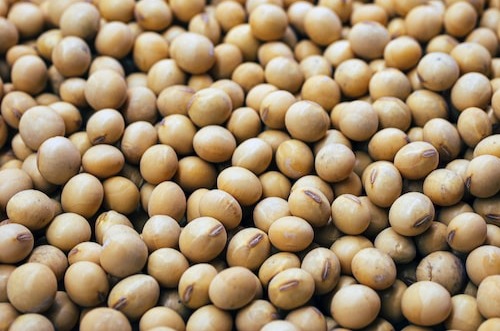
In W27 in the soybean landscape, the European Commission (EC) indicates that European Union (EU) soybean imports in the 2022/23 season amounted to 13 million metric tons (mmt), down 10% compared to 2021/22, with shipments primarily destined for the Netherlands (3.6 mmt), Spain (3.2 mmt), Germany (2.1 mmt), and Italy (1.7 mmt). EU soybean imports were mainly sourced from Brazil at 5.3 mmt, the United States (US) at 5.1 mmt, and Ukraine at 0.4 mmt.
The United States Department of Agriculture (USDA) reports that US soybean crops are deteriorating further, with crops rated in good or excellent condition declining from 51% in W25 to 50% in W26, contrary to 52% market expectations. The USDA also reveals that 35% of US soybean crops are in fair condition, while 15% are in bad or very bad conditions. In terms of growth stages, 24% of the crops are in the flowering phase, up compared to 10% in W25, and 15% in the same period in 2022, and 20% on average. Additionally, 4% of the crops are in the pod formation phase, an increase of 3% compared to W25 and 2% on average.
Rabobank reports that soybean prices in the Brazilian domestic market experienced a 33% drop over the past 12 months, while the Chicago Board of Trade (CBOT) prices registered a 20% decline during the same period. The decline is attributed to the drop in CBOT prices, the exchange rate devaluation, and a premium decrease. The record 155 mmt harvest in the 2022/23 season also contributed to the price decrease. Despite reaching a record 49 mmt soybean export volume between Jan-23 and May-23, the increase in Brazilian supply outweighed this growth.
The National Association of Cereal Exporters (ANEC) expects Brazilian soybean exports in Jul-23 to reach 9.4 mmt, down 32.1% compared to June’s 13.9 mmt. The high export volume in Jun-23 is attributed to increased Brazilian soybean sales in the last week of the month. Daily soybean shipments in Jun-23 averaged 660.52 thousand mt, slightly lower than the penultimate week's 717.07 thousand mt but still 38.9% higher than the Jun-22 average. Brazilian soybean sales in the second half of 2023 are expected to reach approximately 34 mmt, an increase of 8 mmt compared to the same period in 2022. Overall, Brazil's soybean exports for the current season are projected to reach 96.3 mmt, surpassing the 2022 volume by 17-18 mmt.
Lastly, the USDA expects China’s soybean imports in the 2023/24 season to reach 98.5 mmt, slightly higher than the 98 mmt in 2022/23. The increase in Chinese imports is attributed to the recovery in soybean meal and oil demand, driven by the easing of COVID-19 restrictions, lower prices resulting from a record Brazilian soy crop, and modest growth in the pork and poultry sectors. Meanwhile, Chinese soybean production is estimated to reach 19.8 mmt for the 2023/24 season, a slight increase from the 19.4 mmt in the 2022/23 season. The production increase can be linked to subsidies in the main soybean-producing regions, which are expected to result in a modest expansion of the planted area and subsequent production growth.




